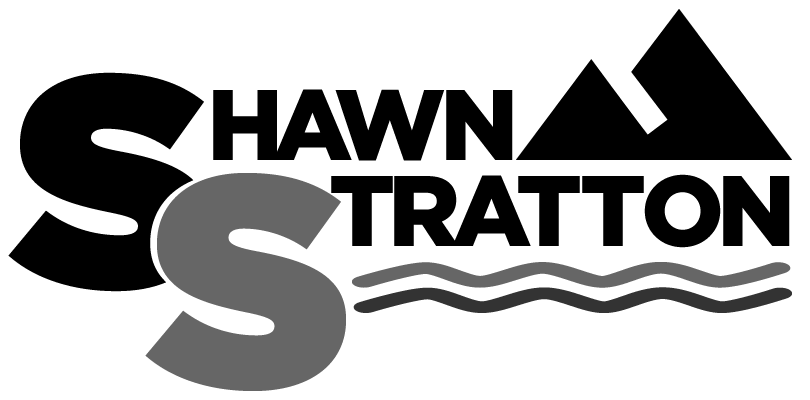by Shawn Stratton | Aug 4, 2016 | Blog Posts
By Shawn Stratton | Follow him on Twitter (Note – this is a 2016 summer addition ‘best of the best’ blog from the past.) You’ve heard the expressions “I’m so busy,” “I’m too busy to do that,” or “I just can’t find the time …” I believe that these phrases have caused an epidemic of excuses in our society. It has become a sign of prestige to say how busy you are when someone asks, “How are things?” When was the last time you answered that question with “Things are pretty slow right now” or “Fantastic, I’m spending my time on things most important to me”? The reality is you are never too busy to do anything. You spend our time on what seems to be the most important thing to you right now. Think about the last time you told someone you were too busy to do something. I’m willing to bet you weren’t too busy at all; you just placed a lower priority on the task you were talking about than the one that was filling your time. An honest response would have been, “I’m sorry but that isn’t a high priority for me right now and I have other tasks that are more important to me taking up my time.” That brings us to the priority list. A priority list allows you to rank the importance of the tasks, which fill your time. I love writing these lists (and thinking about them even more) and ranking them so that I always know what I should be doing with my time. You are what you did today. (Tweet...
by Shawn Stratton | Jul 28, 2016 | Blog Posts
(Note – this is a 2016 summer addition ‘best of the best’ blog from the past.) Clearing out the clutter in your head starts with cleaning up your office. Look around your office are there any empty dishes, paper to be sorted, 10 old posted notes, files on the floor because your desk space is already full? How can you expect to think clearly if your work space isn’t clear? There are actual health and psychological benefits of a clean, uncluttered desk and there is even a name for it: Irritable Desk Syndrome As stated on the SixWise.com website “IDS is caused by working long hours at a cluttered desk, often with poor posture. The combination can lead to both physical and mental symptoms, including chronic pain, and loss of productivity.” I would encourage you to take 10 minutes before each working day to do a little tidy up; you will feel much better and may even be more productive. Until next week… Embrace the Adventure Shawn Shawn Stratton is an international leadership and team building consultant, professional speaker, bestselling author and Ironman competitor. Click here to learn more about how Shawn can help your organization. © 2016 Shawn Stratton. All rights...

by Shawn Stratton | Jul 21, 2016 | Blog Posts
(Note – this is a 2016 summer addition ‘best of the best’ blog from the past.) A few years ago Google set up a research team to find out the elements that create high performing teams. What they found and the length of time it took to find it surprised them. For several years they studied over 150 teams working within Google. Many of the senior executives in the company believed that the best teams developed when the best people were put together on a project. After gathering an enormous amount of data, the researcher found it was almost impossible to find meaningful patterns. In an article recently published in the New York Times’ Google’s lead researcher on the project Abeer Dubey stated, ‘‘At Google, we are good at finding patterns. But there weren’t strong patterns here.’’ The people comprising the team didn’t seem to matter. This finding didn’t surprise me. Leading wilderness expeditions for years with new teams, people would often ask me “what do you do if you get a bad team and you are stuck with them for a month in the mountains”. Strangely enough, that was never a concern of mine. As I gained experience leading, I came to realize that leaders play a more significant role in creating effective teams than the people who make up the team. Frustrated with the lack of patterns in the data they collected, the researchers delved further into reviewing past academic studies on how teams work. In the literature, they discovered that psychological and sociological research kept using the term “group norms” when describing successful groups. Norms are...

by Shawn Stratton | Jul 14, 2016 | Blog Posts
(Note – this is a 2016 summer addition ‘best of the best’ blog from the past.) As a leader, you are doing things with groups of people, meetings, meals, events, travel, etc. The one thing these all have in common is that you are all gathering at a specific time and place. As the saying goes, ‘time is money’, but time is more than money. Time is freedom. The more discretionary time you have, the freer you are. In our overscheduled world, time is the most precious resource you have. Is this someone you meet with regularly that is consistently late? What does this say about their respect level for you? Don’t be last…. Every time. I first heard this expression many years ago when I did a short stint of tree planting in Northern Ontario while in University and I have used it ever since. Anytime you have a gathering of people, there has to be someone who shows up last (I guess you could have a tie). In my tree-planting example, time really was money and freedom. If you were late to get on the bus in the morning, you cut into the team’s working hours and a chance to make more money. In the evening, if you were late to the bus, you cut into people’s coveted free time back at camp. One of the best ways to lose respect from a team is to be consistently late to show up to gatherings. Showing up last or late once or twice is excusable in most circumstances, especially if you were able to give notice ahead of...

by Shawn Stratton | Jul 7, 2016 | Blog Posts
(Note – this is a 2016 summer addition ‘best of the best’ blog from the past.) In 1965, psychologist Bruce Tuckman developed his now popular theory on the stages of group development. The original phases were Forming, Storming, Norming, and Performing. Around 1975, he added another stage to the theory, the final stage which he called Adjourning. You can find Tuckman’s original article “Developmental Sequence in Small Groups.” here and a nice summary of the stages on the businessballs.com site here. This article addresses what I believe is the most challenging stage: Storming. The storming phase comes second in the stages after the initial Norming phase. In Storming, team members have gotten to know each other adequately and have established some baseline norms for the group. They are no longer trying to just “fit in” they are now trying to establish them selves within the group by expressing opinions and challenging others opinions. Members are now confortable to express dissatisfaction and push the edges of the team standards laid out in the norming phase. Storming may even be directed to the team leader when individual roles have not been clarified or developed into what they expected. Growing Pains I remember as a teenager just about every ache and pain I had, that was not directly from a bruise from my chosen sport of the day, was attributed to “growing pains”. The Storming stage is the growing pain phase of group development. No one likes it but it is essential part of growth. Unlike the teenage growing pains, there is no ibuprofen (what we call ‘I Be Broken’ on expeditions)...

by Shawn Stratton | Jun 30, 2016 | Blog Posts
I know most of you read my weekly posts to gain valuable leadership insights but there are also those who check it out to see what its going on in Shawn’s world. This post is a short update on the big move my family is about to embark on and what you can expect from the blog over the summer. Several years ago, when living with a Maasai tribe in Serengeti in Kenya, a Kenyan friend mentioned to me that these people could move from their huts with everything they need and all their worldly possessions on the back of one mule. Wow, I thought, partly in jealousy and partly in sadness. I have been thinking of my Maasai friends this week as I attempt to pack up my house. Moving to Oxford, England, For One Year Moving a young family of 4 overseas, to another continent, is no easy task for anyone. To make matters more challenging for us is that we don’t know where we will be heading after we leave England in a year. As daunting as the task of dealing with all our stuff is, I am starting to realize the hardest element of a move is the mental strain it places on you. The biggest challenge is that we are trying to only move our family with what we can take on the plane. When you live in a 4-bedroom house with kids and a home office, it means there are a lot of decisions to make about your stuff. The good thing is that it’s all only STUFF. One thing I have learned...

by Shawn Stratton | Jun 22, 2016 | Blog Posts
I was recently speaking with a participant at a conference I was presenting at and he was telling me about the loss of productivity because of their use of an older, slow piece of software. Many times, when people are underperforming, it is because of the individuals’ behaviors but often the cause is lack of resources or the system. When the equipment or system is causing poor performance in a department, it is the manager’s role to do everything possible to influence the senior leadership to provide adequate equipment and / or alter the system. We have heard the organizational change has to come from the top down. Yes, this may be true, but what about if you are in a middle management leadership position. Your employees are looking to you for leadership and to create any changes needed to support them in their roles. Too often senior leaders are making decisions for the organization without direct knowledge of what is really needed and the impact it will have. In the LEAN LEADERSHIP model that Toyota made famous, organizations seek to bring their decision making to the bottom of the leadership hierarchy as often as possible. Tapping into the knowledge of frontline workers by asking them what they need to perform their jobs faster and better, organizations can save an enormous about of time and money. As a workplace leader, your responsibility is to make it easier for your team to do their job. That’s not saying you need to make the job easy for them. You need to prevent or remove obstacles obstructing them in the process...

by Shawn Stratton | Jun 16, 2016 | Blog Posts
Last week, I presented at a project management conference on leading a safety culture, a culture where near misses are seen as a significant learning opportunity and not as potential disasters that are swept under the rug for fear of reprisal or job loss. A near miss is an unplanned event that did not result in injury, illness, or damage – but had the potential to do so. It is safe to say that of the dozens of the minor and major incidents I was involved in over 15 years of leading expeditions, most, if not all, were successfully resolved due to past learning from documented near miss situations, everything from arranging and paying for an Indian military helicopter to perform a dramatic rescue at 12000 feet in the Himalayas, to managing challenging river crossings in the Yukon to encountering grizzly bears deep in the back country of Alaska. Fortunately, most organizations I worked with had progressive cultures around documenting and learning from near misses. Unfortunately, not all organizations are like this. Recently, I have been speaking with some project managers who work in a culture of fear of disciplinary action for being involved with a near miss incident. This fear has caused them to not want to report near misses and minor incidents. Alternatively, I know of several organizations that have rephrased the term ‘near miss’ to ‘good catch’. I know it is only semantics but in an area that usually conjures up fear, semantics can be important. One company not only expected to report ‘good catches’ on potentially dangerous situations but also have their employees report “good catches’ of...

by Shawn Stratton | Jun 9, 2016 | Blog Posts
Part 2 Most of my life, people have told me I was hardworking, especially my schoolteachers. It always felt a bit odd because I didn’t necessarily feel like I was working harder than anyone else. Perhaps they would say it because I didn’t do particularly well with their testing methods, but still wanted to build my confidence because being called a hard worker by someone of authority feels good. Or perhaps they understood locus of control (LOC) and wanted me to develop a strong external LOC in me from an early age. As I discussed in last week’s post (How Your Locus of Control Explains Your Thoughts, Actions, and Motivations), LOC measures generalized belief in internal versus external control of reinforcement. In the post, I have mentioned an example of how the US Marines develop an internal LOC among their new recruits. Here, I will give another example of how this can be developed in children as well as adults. Don’t Tell Them They Are Smart! Someone’s LOC can be influenced through training and feedback, especially children. New York Times’ business reporter Charles Duhigg highlights one experiment by Stanford physiologist, Carol Dweck to demonstrate this in his book, Smarter, Faster, Better. The experiment gave students in grade 5 a series of challenging puzzles to complete. All were told they did well. Half of them were told they must have worked hard at solving the problems. The other half were told you must be really smart for solving the problems. The second round of puzzles included some easier and more challenging ones. The kids who were praised for their intelligence...

by Shawn Stratton | Jun 2, 2016 | Blog Posts
I was sticking to the back of the group with our slowest team member as we hiked up a remote unnamed peak in the Pelly Mountains in Canada’s Yukon Territory. At the time, I was leading a month long backpacking and canoeing expedition with a group of educators from across North America. Jane was moving steady but slowly. She was not in the best of shape, had limited backpacking experience and had never stood on top of a mountain before. She was determined to make it up the mountain but as things started to get tough, she began doubting herself and expressed many negative thoughts. I knew she was capable of making it to the summit and that she would be overjoyed when she got there. It would be a great confidence boost to her to help her through challenging moments during the rest of the expedition and more importantly, her life back home. When her speed slowed, my encouragement picked up. As we took our final steps to the summit, tears were streaking down from Jane’s eyes, and she belted out “Thanks to the lord, he got me up here!” I was surprised and frankly a little disappointed to hear her comment. In respect to her religious beliefs, I didn’t respond to the comment but I really wanted to say was “I just saw you dig deep and hike up the mountain on your own two feet. You were the one who physically got you here, way to go, awesome job. If you can do this, you can tackle just about any challenge, I’m so proud of you!...















